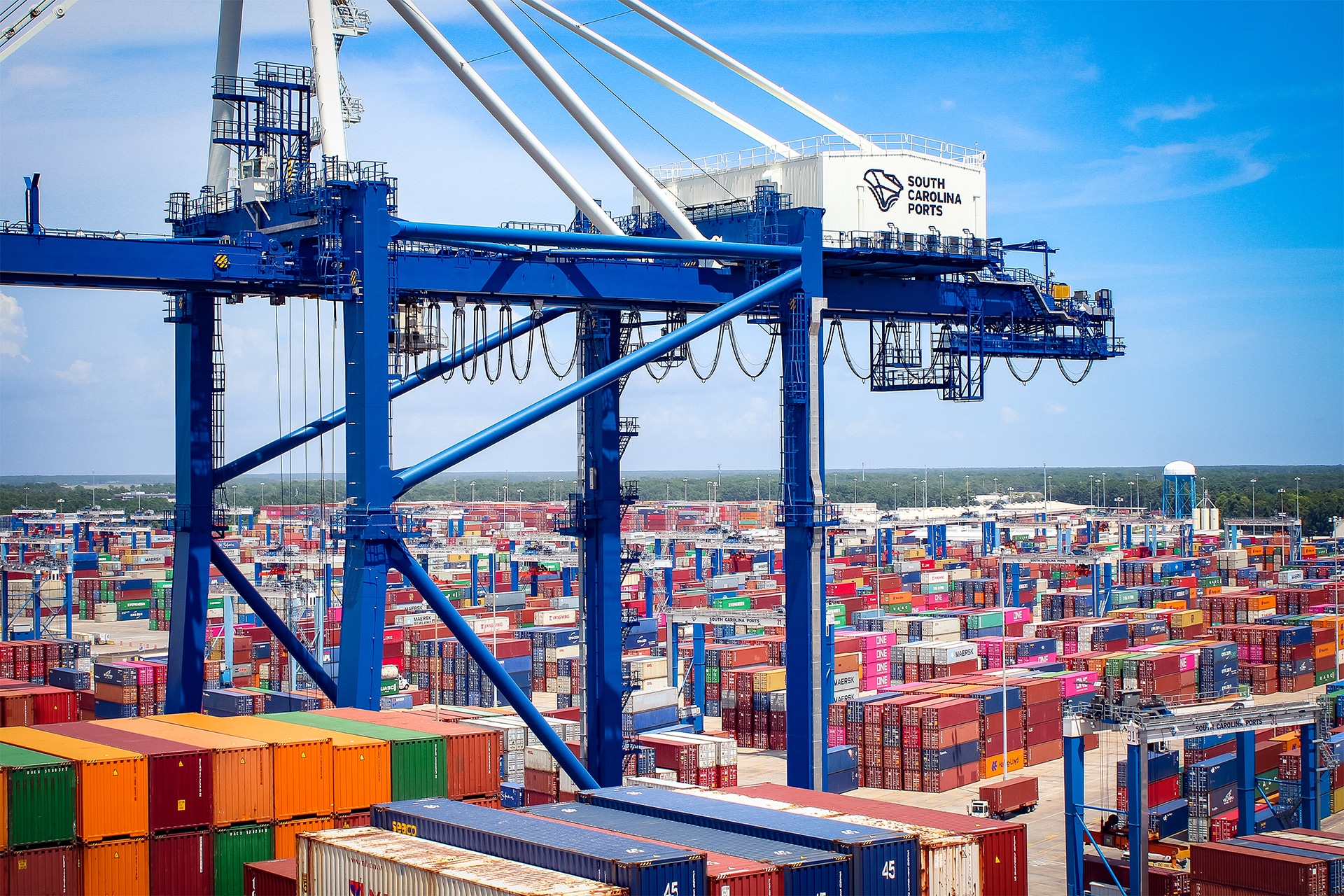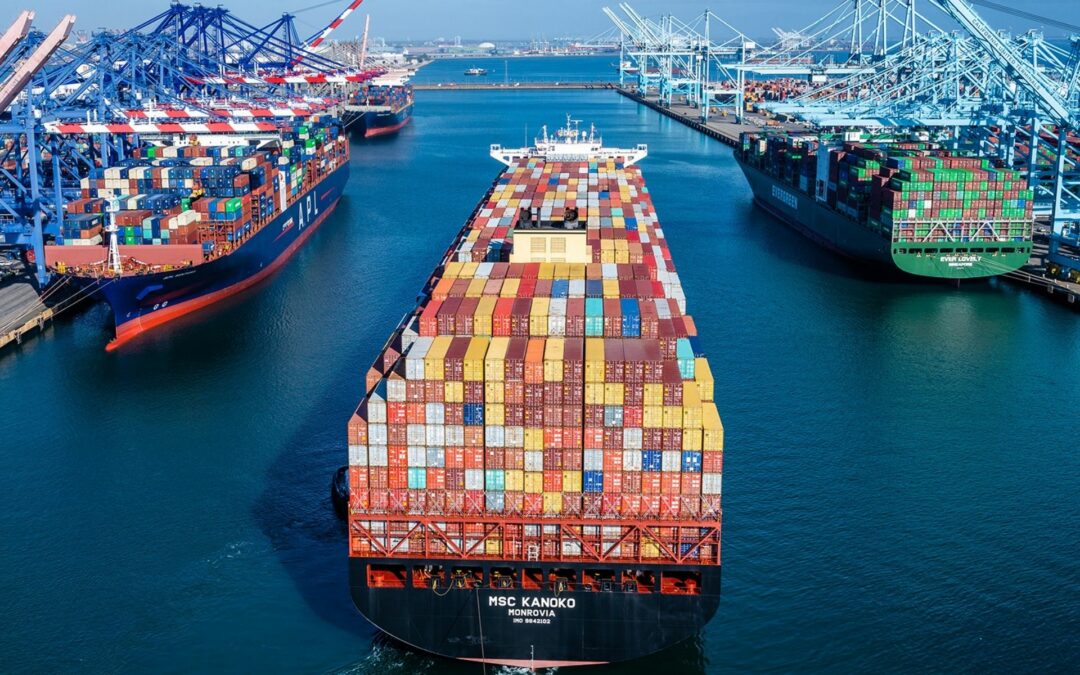Monthly inbound cargo volume at major container ports in the United States should reach its highest level in nearly two years this summer, according to the Global Port Tracker report released by the National Retail Federation and Hackett Associates. The report cited retailers stocking up for the holidays to meet strengthening consumer demand while also looking to beat increased tariffs on China imports set to take effect in August.
U.S. ports covered by Global Port Tracker handled 2.02 million TEU, a 20-foot container or its equivalent, during April, the latest month for which final numbers are available. The figure was up 4.6% from March and up 13.2% year over year, and was the highest number since 2.06 million TEU October 2023.
Ports haven’t reported May’s numbers yet, but Global Port Tracker projected that volume rose to 2.09 million TEU, up 8.3% year over year to the highest level since 2.26 million in August 2022. The forecast for June continues the upward trend at 2.11 million TEU, up 15.2% year over year, with July forecast at 2.1 million TEU, up 9.5% from the year prior; August at 2.17 million TEU, up 10.6%; September at 2.06 million TEU, up 1.7%; and October at 2.01%, down 2.3% from the same month in 2023.
Global Port Tracker predicts import volume in the first half of 2024 to total 12.1 million TEU, up 15% from the same period last year. Imports in 2023 totaled 22.3 million TEU, down 12.8% from 2022. The import volume gains come after NRF forecast 2024 retail sales — excluding automobile dealers, gasoline stations and restaurants to focus on core retail — to gain between 2.5% and 3.5% versus 2023.
“Consumers are continuing to spend more than last year, and retailers are stocking up to meet demand, especially as we head into peak shipping season,” said Jonathan Gold, NRF vice president for supply chain and customs policy. “The high level of imports expected over the next several months is an encouraging sign that retailers are confident in strong sales throughout the remainder of the year. Unfortunately, retailers are also facing supply chain challenges again, this time with congestion at overseas ports that are affecting operations and shipping rates.”
Hackett Associates Founder Ben Hackett said an expected seven-month string of import levels above two million TEUs — a level reached only twice since October 2022 — is partly due to changes in the annual shipping peak season.
“Imports of containerized goods at U.S. ports are booming, with particularly strong growth on the West Coast,” Hackett said. “In the last couple of years, we have witnessed a flattened peak season that has stretched out the volume of imports over extra months versus the strong, consolidated surge seen in the past. Reasons range from retailers restocking following strong sales after the pandemic to trying to get ahead of increased tariffs on goods from China set to take effect in August; and ensuring sufficient inventories for the holiday season amid strong consumer demand.”
Global Port Tracker, produced for NRF by Hackett Associates, provides historical data and forecasts for the U.S. ports of Los Angeles/Long Beach, Oakland, Seattle and Tacoma on the West Coast; New York/New Jersey, Port of Virginia, Charleston, Savannah, Port Everglades, Miami and Jacksonville on the East Coast, and Houston on the Gulf Coast.





